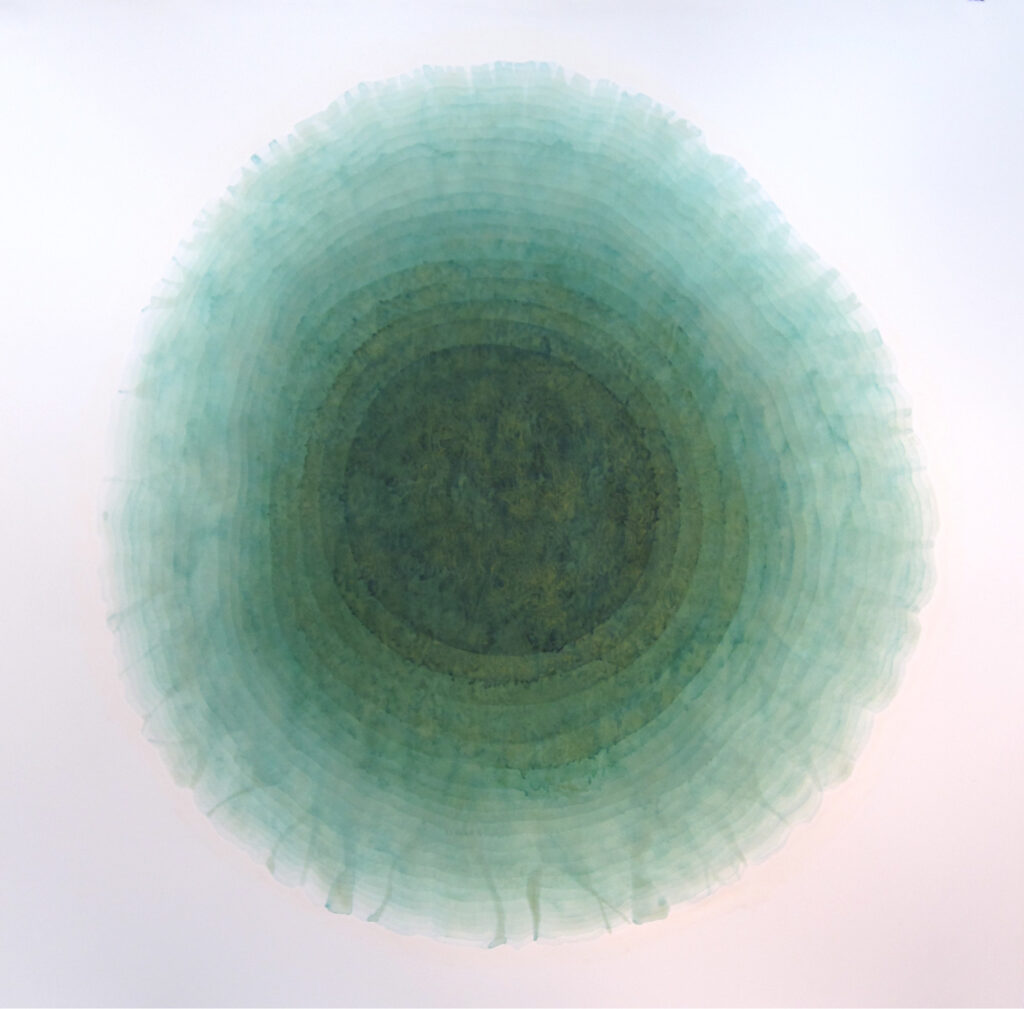The cryosphere is the area of earth’s surface where water is in solid form, such as glaciers, ice caps, ice sheets, sea ice and permafrost. It exists in a close relationship of climactic linkages and feedback loops to the hydrosphere, earth’s areas of liquid water. The works in this exhibition explore the fluctuating zone between hydrosphere and cryosphere, between water and ice.
The remote Arctic regions of the cryosphere have long attracted human exploration. One particularly intrepid explorer, the Swede S.A. Andrée, set off in a hydrogen balloon in 1897 in search of the North Pole. Like so many polar expeditions before and after, Andrée’s visionary attempt came to a tragic end as the balloon crashed in the isolated Arctic, and the explorers starved and froze to death. The remains of Andrée’s party were discovered by another expedition in 1930, and haunting photographs of the expedition’s members, long dead, and the collapsed balloon, were recovered from their frozen cameras.
The 19th-century American landscape painter Frederic Church, also drawn to the arctic, risked his life to paint oil sketches of a calving iceberg from a boat off the coast of Labrador for his monumental painting of 1861, The Icebergs: or, The North. The “supernatural splendors” as he put it, of the arctic landscape, embodied the combination of terror and beauty that defined the 19th-century sublime. Now, at the dawn of the 21st century, the arctic itself is in peril, as glacial melting occurs at alarming rates around the globe.
Ice cores – similar to tree rings – are natural recorders of climate. However, the span of time captured in ice cores far surpasses that in tree rings, since ice cores can reconstruct climate conditions extending up to nearly eight-hundred-thousand years into the past (in the case of the 3000 meter EPICA* ice core). Bubbles of ancient air, dust, ash from volcanic eruptions, and even small meteorites are trapped in these recrystallized layers of frozen water. Modern events such as the atmospheric testing of nuclear weapons and the passage of the Clean Air Act are also evident in the ice core record.
Lines drawn across a surface accumulate in strata like winter snows. Layers of color disintegrate and disappear. Icebergs calve too frequently to paint, yet art bears witness to disturbing data in a way that science cannot.
* European Project for Ice Coring in Antarctica
-

Hot Glacier, 2012, Watercolor on paper, 66” x 32”
-

Blue Melt, 2012, Watercolor on paper, 66” x 32”
-

Glacial Ghost (Fata Morgana), 2012, Watercolor on paper, 66” x 32”
-

Black Glacier, 2012 Watercolor on paper, 66” x 32”
-

Verdigris Glacier, 2012, Watercolor on paper, 66” x 32”
-

Ice Balloon, 2020, watercolor on paper, ca. 50 x 50"